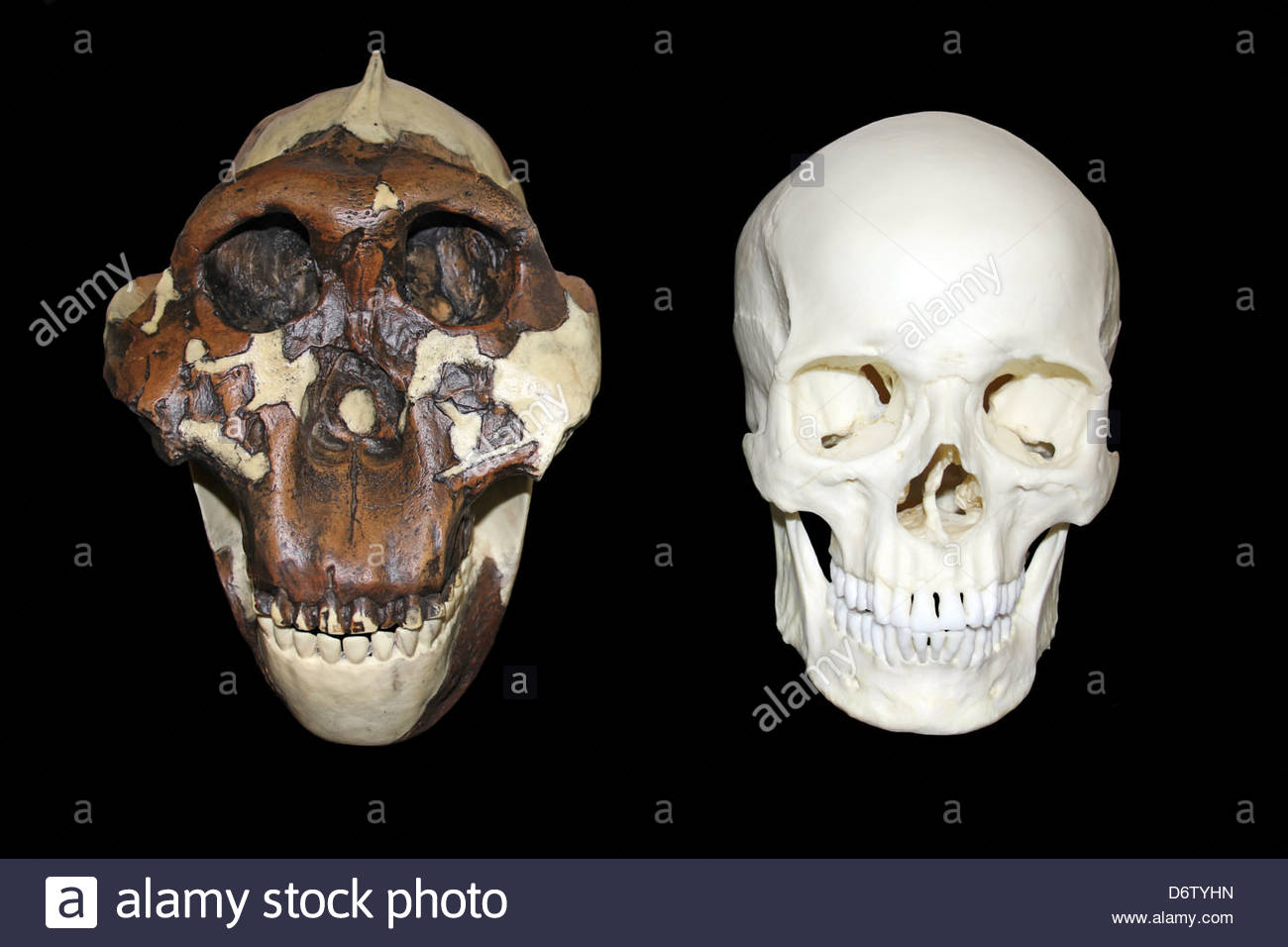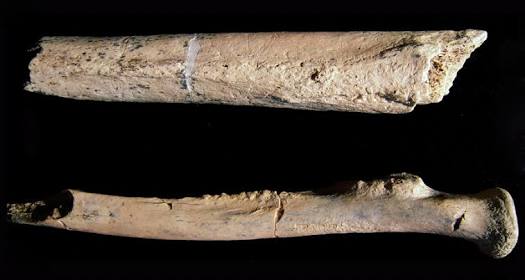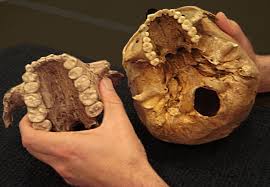The Nutcracker Man

Newfound body parts have now empowered anthropologists to manufacture a more practical body for Paranthropus boisei. Recouped in an indistinguishable district of East Africa from the first skulls, the new examples incorporate bits of two arm bones, two leg bones, and nine teeth. The teeth appear to have originated from a solitary individual, a sensibly close counterpart for Paranthropus boisei, so the appendage bones found with them probably originated from it as well. The subsequent new body-for-boisei does not, be that as it may, fit the way of life beforehand envisioned for Paranthropus boisei. Or maybe, the parts appear to have had a place with an effective animal very much prepared for arboreal life.
"This is the first occasion when we've discovered bones that recommend that this animal was all the more roughly manufactured—joining earthly bipedal headway and some arboreal practices—than we'd already thought," says anthropologist Charles Musiba, coauthor of the paper in PLOS-One
.jpeg)
The Nutcracker skull
This is a thrown of the "Nutcracker Man" noggin initially found in 1959 by Mary Leakey alongside a powerful jaw discovered later. In spite of the monstrous teeth and jaw and the gorilla-like sagittal peak, transformative anthropologists trust this fossil originated from a side-branch of the human developmental line. Numerous different bones have been regrettably connected with skulls like these throughout the years, prompting inaccurate decisions about the Paranthropus boisei's plausible way of life.
Mary Leakey found the first Paranthropus boisei skull in northern Tanzanian Pleistocene shake in 1959. The Leakeys named it "Dear Kid." Their child Richard Leakey uncovered a moment skull 10 years after the fact. He thought the skull's proprietor had been the most punctual client of Oldowan apparatuses, which were found in a similar district. Be that as it may, the conjunction of Homo fossils with the devices and the Paranthropus skull raise doubt about that idea. A significant number of the other mammalian creature fossils exhumed with Paranthropus fossils have confirmation of butchery on their bones. The newfound bones propose their proprietor likewise met a savage end. We normally should ponder which end of the apparatuses "Nutcracker Man" was on. Maybe he was less making supper but rather more he was being supper!
Those body parts that have in the past been "regrettably" alloted to Paranthropus boisei look like those of a more agile rendition of Australopithecus afarensis (otherwise known as Lucy). Most evolutionists assert Lucy was bipedal—another very questionable claim talked about widely in "A Gander at Lucy's Heritage" and "Lucy, the Knuckle-Strolling "Evil entity"?" Along these lines, transformative anthropologists for the most part trust Paranthropus boisei was a bipedal side-branch on the human hereditary tree. Paranthropus boisei evidently developed as a thin relative of an australopithecine around 2.3 million years prior and went terminated around 1.2 million years back.
"It's an alternate branch on our family line tree," Musiba says. "It came later than alternate hominins, so the inquiry presently is 'the end result for it?'"
Huge Teeth, Little Mind
The cranial limit of the Paranthropus boisei skull found by Richard Leakey was just around 510cc, insignificantly bigger than an australopithecine's. This size is far underneath the typical for people however average for an incredible gorilla.
Paranthropus boisei had vast teeth and a durable peaked gorilla-like skull with a wide face to oblige those huge teeth and huge biting muscles. Wear designs on the molars appeared to recommend the creature consistently bit on hard sustenances. In this manner, Paranthropus boisei came to be referred to not as "Dear Kid" but rather as "Nutcracker Man" on the supposition that his huge chompers had developed to eat nuts, seeds, and hard natural products. Later investigations of nourishment deposit in Paranthropus boisei teeth, in any case, demonstrate that it really ate a milder eating regimen, skirting the nuts and most likely majoring on tropical grasses and sedges.
Adaptable "Cousin"
"The more we are finding of these fossils, the more we are finding out about the historical backdrop of these species," clarifies Musiba. With a stature in the vicinity of 3.5 and 4.5 feet, its arm bones are much more hearty than anybody beforehand suspected. This proposes Paranthropus boisei had a capable abdominal area simply ideal for lifting itself around a forested situation.
To keep up their conflict that Paranthropus boisei was a bipedal relative of an as far as anyone knows bipedal australopithecine, anthropologists must battle that our assumed cousin Paranthropus boisei was as at home in the trees as on the ground. "It appears," clarifies Musiba, "to have all the more very much shaped lower arm muscles that were utilized for climbing, fine-control and a wide range of conduct."
"We will accomplish more work on biomechanics and see what else this animal was doing," Musiba says. "We are beginning to comprehend the physiology of these people of this specific species and how it really adjusted to the sort of environment it lived in. We thought about the sort of sustenance it ate—it was omnivorous, inclining more toward plant material—yet now we know all the more: how it strolled around and now we know it was a tree climber. We realize that it was exceptionally solid. It's exceptional to discover how solid this individual was. The more grounded you are the more versatile you are."
Rough End
nutcracker femur
.jpeg)
These bones—a bit of thigh bone on the left and a bit of a lower arm bone on the right—were found with nine Paranthropus boisei teeth in Tanzania's Olduvai Canyon. Teeth imprints and crenulations—scallop-formed teeth checks on a broken bone's end—confirm the harm dispensed on the thigh bone by a flesh eating creature as does the kind of break found on the arm bone. In spite of the proof that this animal lost its fight with an effective brute, the amazingly thick cortical bone recommends Paranthropus boisei was itself all around prepared for swinging through the trees. The proprietor of the four appendage bones was likely very solid, Musiba and partners accept, in light of the fact that the external (cortical) layer of bone was very thick, significantly thicker than that of current people. Before this disclosure developmental anthropologists thought Paranthropus boisei was a "gracile australopithecine." The creators of the examination infer that their work demonstrates Paranthropus boisei was "profoundly specialized"4 and "had a vigorous postcranium, and likely consolidated earthly bipedalism with at any rate incidental episodes of arboreality".
By and by, these bones indicate tooth spaces from being nibbled, scalloped tooth marks where bone was obviously chomped through, and breaks run of the mill of those exacted in the wake of losing a contention with a huge meat eater. Maybe the proprietor of the bones ought to have remained in the trees more.
NEITHER NUTCRACKER NOR MAN
.jpeg)
NOTHING ABOUT THESE NEW BONES SHOWS THIER PROPRIETOR WAS BIPEDAL.
In the case of beginning with just a gorilla-like skull with enormous teeth or an arrangement of thick bit up appendage bones, it isn't conceivable from the fossil record to locate a developmental chimp like tribal cousin of people. Fossils of wiped out animals, regardless of whether they have a few highlights that recognize them from current partners—and in fact they should or they would not be extinct(!)— are not on the developmental stepping stool to turning into an alternate sort of further developed animal. These creatures were not progressing to anything. Truth be told, this wiped out non-human primate seems to have been all around intended for its life in the trees and for eating whatever vegetation in its living space came to hand.
Moreover, nothing about these new bones exhibits their proprietor was bipedal. The claim that this creature was bipedal depends on even less confirmation than comparable claims about austrolopithecines—which is a decent trap since the bipedality of Australopithecus afarensis and different austrolopithecines is absolutely guess at any rate.
Developmental scientists can't permit that their pet human genealogical cousins—australopithecine or Paranthropus—could be anything besides bipedal, so at whatever point a touch of bone swings up to show generally, the transformative story ordinarily transforms to one permitting the animal a double living space progressing to the earthbound.
.jpeg)
"Nutcracker Man" was presumably no nutcracker and absolutely was no man. "He" was not a side-expand shooting from the human genealogical line. "He" was not our cousin. Maybe Paranthropus was only a variety of an indistinguishable sort of gorilla from the australopithecine, as a few scientistss think.But notwithstanding the affectionate wishes of transformative anthropologists who try to clarify human inceptions while disregarding God's onlooker record of our most punctual history, nothing about this terminated chimp's bones and teeth can disclose to us anything about where we—people—originated from.
God at the outset made two individuals—Adam and Eve—and from them all our human cousins have dropped. Every one, regardless of what Neanderthal-like name the present anthropologists dole out to their bones, is a relative of Adam and Eve, the same amount of as every one of us. Whatever is left of the contender for the human tribal line are basically relatives of the sorts of chimps God made on an indistinguishable day from man, the sixth day of Creation Week, around 6,000 years prior.
Thanks for reading,kindly upvote and resteem